Duck Tape: Film Analysis of Rutgers Football 2025
Special thanks to Andrew Rice of On the Banks for joining me to discuss Rutgers’ roster on this week’s podcast:
The upward trajectory of the offense for the 2025 season has continued as Andrew and I talked about over this past offseason – several longtime and severe limiting factors, some of which had lasted upwards of a decade, that had been holding back the Scarlet Knights we’d seen finally come to an end in 2023-24, and they were poised to take a big step forward in 2025.
While they’ve usually had pretty productive skill players at the running back and wide receiver positions — and 2025 is certainly no exception — an appalling run of quarterback misfortune since 2014 and offensive line instability for much of the recent past has kept them from accessing that talent. In 2024, however, the line had finally stabilized and was set to bring back nearly all the starters and several experienced backups for 2025, with an uptick in grades that was promising for the coming season.
Last year was also when Rutgers’ current OC Ciarrocca brought on the quarterback he’d recruited to Minnesota back when Ciarrocca was the coordinator there, #16 QB A. Kaliakmanis. Andrew and I have been talking about Kaliakmanis’ growth for a while now, and Andrew had to remind me that this is his final season of eligibility – when I first started watching him come in as injury relief for then-starter Tanner Morgan in 2022, followed by taking over as starter himself the next year, I mistakenly thought that Kaliakmanis was a true- then redshirt-freshman because that’s what the lack of control over his powerful arm put me in mind of.
It wasn’t until relatively late in 2024 at his new school Rutgers that we saw him develop any real refinement or touch on his passes at all … but that progress has continued well in 2025 and Kaliakmanis’ NCAA passer rating has exploded by 30 points to 152.3, well over the ~120 ratings he’d turn in each prior year that were more than a full standard deviation below FBS median.
Still, I think there’s quite a bit of maturing left to do for Kaliakmanis as a passer, a sentiment Andrew shares and we spent a good deal of the podcast discussing issues with patience in the pocket, reading progressions, forcing the ball, feeling phantom pressure, defensive manipulation, and more. Nothing is particularly damning or unusual, but in short, I think Kaliakmanis is behind by about a year’s worth of QB development for a redshirt senior who’s on his fourth year of play, and if it weren’t against the rules he’d probably significantly improve his draft stock if he could run it back for 2026 (though as we joked on the podcast, with the way things are going for the NCAA in the courts these days, who knows …).
Rutgers has locked into just four wide receivers getting reps during meaningful play, and of them only three are actually receiving targets while the fourth just comes in for 10-personnel sets and this year has just been used as a decoy to re-arrange the coverage. The three main wideouts are some of the most productive in the Big Ten this year – #9 WR Strong who’s 6’3” and always plays on the outside, in the slot there’s #0 WR Sheffield (who last year was at North Texas but before that was with Wazzu and was notable for his big play potential in my 2023 preview), and then 6’6” WR Duff usually plays on the outside in 11-personnel but will switch to Y-receiver in 10-pers and a few other looks. The extra receiver is #2 WR Black, who was part of a six man rotation last year with good YPT yardage but below average efficiency on something of a drops problem; he hasn’t gotten a meaningful target yet in 2025 and I’ve only ever seen him line up on the outside in 10-pers.
All three of Strong, Sheffield, and Duff are turning in spectacular per-target numbers – each above 63% success rate and about 9 adjusted YPT, with Strong leading all of them in both the frequency of targets (he’s getting about a third of all passes, Sheffield and Duff are getting about 21% apiece) and an incredible 10.5 adjusted YPT.
Here’s a representative sample of successful passing plays:
- :00 – Not great blitz pickup here, Kaliakmanis is rushing his throw and it’s behind his receiver (although still better placement than earlier in his career when he would have launched it into the Raritan). Strong has wrong-footed the corner but the odd timing reaching back for it has given the defender a moment to catch up, but great hands win the play.
- :18 – As usual, Iowa’s DBs struggled with any degree of athleticism from the receivers and cover-1 is a huge opportunity. Sheffield smokes the nickel off the line on the slot fade. Kaliakmanis delivers big just before pressure that the RT is giving up arrives.
- :34 – Nice pickup here, the LT knocks out one guy after another and the right side handles the overload well. Here’s Duff in one of his Y-receiver lineups, running the safety’s toes then breaking him off very cleanly. Great stretch for the ball, with his size he barely has to leave his feet.
- :48 – Andrew was referring to this play when we were talking about redzone scoring on the podcast – this is what they’re trying to leverage when they get in range, just dominating cocky corners with size. It hasn’t always worked out but it is very satisfying when it does.
With a passing game this strong, it’s a wonder the Scarlet Knights are ever stopped. There are a series of interlocking issues culminating in one major problem however, which has kept them from blowing out opponents and remining undefeated.
One has been mentioned above and is the most frequent to see, Kaliakmanis displaying some impatience in pass selection or in his reading of the defense. Another is that for all the improvement the offensive line has made, they’re still something of a work in progress, with a right tackle who’s relatively new to the position and can be gotten around, and a series of injuries to the left tackle (on the podcast I learned that most of 2025 they’ve been playing their third option and at times have had to go to their fourth).
Possibly related to the QB judgment issue is that only in the most recent game have they ever really targeted the RB out of the backfield (nine targets last week, four targets in all previous FBS games combined, excluding garbage time), and even those targets were mostly in the last few drives of the game so it looks like a very late light bulb coming on. The final easily identifiable issue is that about 18% of all targets are going to the tight ends, but these tend to be very short passes on toss plays and furthermore their hands are highly unreliable (I don’t want to show examples of these as they’re very unflattering, they’re the ridiculous “trying to catch a hot potato” kind of thing, but if the reader requires verification Andrew instantly agreed when I mentioned it and indeed used this fact to make a subsequent argument I hadn’t considered) such that Rutgers is getting under four YPT on all these TE throws, making them more or less wasted plays.
What all of these things add up to — but as we dicussed on the podcast, there’s also more to it, and the extra parts are baffling to the both of us — is that Rutgers gets stopped completely dead in the redzone. They can look amazing between the 20s but as soon as they cross the opponent’s 20 yardline (actually I can pinpoint where the per-play effectiveness and a-EPA begins its collapse at the 31), everything falls apart. This includes things which are totally maddening to observe, like o-line blocking grades, which makes no sense (it’s the defense in the trenches that’s supposed to get fatigued on long drives, not the offense), and Rutgers’ preternatural 2nd & long passing game which goes from a +7 percentage point overperformance compared to 1st & 10 (itself kind of weird) outside the redzone to a mind-bogglingly terrible 16% 2nd & long success rate inside the redzone.
Numerically, the offense goes from a 57.6% per-play efficiency between the 20s to a 44.1% efficiency inside the 20. A small part of that is a falloff in rushing efficiency, by about four points — fairly natural, as defenses compress — while the major part is that passing efficiency collapses an astonishing 21 percentage points, from 57.8% outside to 36.8% inside.
As such, Rutgers has only converted 16 of its 27 meaningful redzone trips in FBS play to touchdowns, a 59.3% rate. For context, global efficiency is usually coincidental enough for F+ advanced statistics that having a 70% redzone touchdown conversion rate goes hand-in-hand with a top-30 ranking. That’s basically true this year (it’s actually top 33, the service academies are hyperefficient outliers), but there are four teams who are F+ darlings outside the redzone and so are highly rated offenses in that system, but are under 61% in redzone efficiency and so my model is very skeptical of them finishing the season strong: Illinois, Kansas, Texas Tech … and Rutgers.
This, as well as middling rush explosiveness scores which I’ll explore in a moment, is why my model would not have Rutgers ranked 17th as F+ does, but rather as a top-35 offense. (Incidentally, my model is also skeptical of currently top-15 F+ offenses Baylor and Ole Miss staying that way with bubble redzone numbers at 64%.)
Here’s a representative sample of unsuccessful passing plays:
- :00 – No pressure, and a clearly predetermined route (check out Strong’s merengue on the other side). To the boundary and at close range this needs to be a perfectly placed back shoulder throw against physical coverage and this just isn’t it out of Kaliakmanis. This was the first of a six-play failed redzone sequence; the rest were a stuffed run, a bad pass bailed out by a fabricated penalty, this exact play again which failed for the same reason, a dropped pass, and a sack on an all-out blitz in which three defenders got through.
- :13 – This needs to be a quicker post-snap read. The backer’s first step wide instead of down indicates the hitch to Strong isn’t going to be there, Kaliakmanis shouldn’t keep staring at it and scan to the field immediately. The corner is way off the out-route to Duff, he needs to fire it off not pull the string and scramble. Kaliakmanis has the arm strength to win this from the opposite hash, he just needs to lead Duff back a bit to the sticks but there’s lots of room to work with.
- :32 – This one isn’t predetermined, and he’s got plenty of time to choose to not nearly throw a pick (Andrew’s comment was that there should have been a lot more but he throws with so much heat that several have bounced off DB’s hands). The throw here is to Sheffield who’s beaten the nickel, there’s nobody in the lane because of the blitz. Throwing this to Strong against this coverage is nuts with the leverage and help, but Kaliakmanis is locked in.
- 1:01 – The stunt in the middle beats the RG, and the QB retreats backwards a bit, throwing the timing off. Since this entire passing offense is built around quick timing throws substituting for Kaliakmanis manually computing it, anything like this will do it. He should be hitting the RB on the wheel who’s got the backer in man breathing exhaust fumes, but instead he just forces it right back to the first read after stumbling and the CB has had lots of time to collapse down on the spacing for an easy PBU.
At this point the rushing offense goes almost entirely through true sophomore #3 RB Raymond. At the beginning of the year, Raymond and senior FAU transfer #5 RB Campbell were splitting carries during the non-con at comparable effectiveness rates — both were north of 57% per-carry success and 5.8 adjusted YPC prior to conference play, though Raymond’s numbers have come down to 55.1% and 5.5 YPC with the larger sample — but Campbell got hurt during the FCS game in week 3 and Andrew told me that unfortunately he’s going to be out indefinitely and possibly the entire season.
The relief back during conference play has been #20 RB Benjamin, but as Andrew noted despite constant praise from the coaching staff the carries and production hasn’t matched – Benjamin’s getting about 10% of Raymond’s workload and at only 41.6% efficiency and 3.8 YPC. During the week 5 game against Minnesota in what seemed to be an experiment, they switched out the relief back to #27 RB Brown, but this was even less helpful, 20% success and 2.4 YPC, and in the next game against UW they went back to Benjamin.
The actual other runner in the offense is Kaliakmanis on RPO keeps, but as these are determined by the defense there’s only been a dozen during meaningful play (Kaliakmanis does his reads well, they have a high 83% success rate, though he’s getting just a little over 4 YPC on them; his QB sneaks are similarly efficient but naturally an even lower YPC). Andrew and I agreed that Raymond looks very good for such a young back, that the only real criticism at this point is pass protection but this is understandable given his age and build, and that he’d probably have higher than a 14% explosiveness rate if obvious fatigue issues weren’t setting in from overwork.
All five of the current offensive line starters are seniors, and were starters in some fashion on last year’s line. There are some complications, though. The most straightforward is the center, #59 C G. Zilinskas, who’s delivered every snap for the last several seasons and has been steadily improving. I think they’ve known the guards they wanted for a while, those are #65 LG Felter and #69 RG Asamoah, but injuries on the left side and Asamoah getting benched in 2023 caused a lot of shuffling around, and it hasn’t been until right now that both have been available and playable at this level at the same time.
At the tackles, #56 LT Needham has been bouncing around for the last three years – he was at RT to start out in 2023 then got hurt, went back in 2024 but was benched and converted to a jumbo TE for specialty packages, and in 2025 he’s the third-string LT who’s now the fulltime starter. That happened because the FCS transfer #68 LT Langsdale, whom Andrew told me was going to have the job, got hurt in training camp, and then last year’s backup left guard #76 LT Chin came out of nowhere to win it after Langsdale was unvailable, but then Chin also became hurt. However, Needham has also missed some time during this season so another FCS transfer meant to be a developmental guy, #74 LT Giwa, has rotated in (Andrew’s description verbatim: “he’s shown improvement, he went from really bad to not great”). On the right side, #54 RT White didn’t play until the middle of last year, when he took over for Felter at left guard, and then later on he took over at right tackle when Needham lost that job. Now he’s the fulltime RT.
In a sense White has a more stable position, but he’s still grading out lower in pass protection than Needham is, and both of them are coming in above 25% error rates beating edge rushers and picking up blitzes … though that’s still a step up on the close to 40% rates I was seeing as recently as 2023. The biggest improvement is in the middle of the line in pass pro, where cumulatively the interior is under 10% giving up pressure right up the middle – that doesn’t sound like much, and indeed it’s where it should be for an FBS team, but in the recent past these guys were turnstyles and the QB couldn’t operate at all for instant pressure around which he couldn’t step up in the pocket.
In run blocking, however, the o-ine remains mediocre across the board with cumulative 26.5% error rates – that’s better than in the past and it’s raised their 1st down run profile from bad to middling so they’re no longer constantly behind the chains, though generating explosive rushing and converting medium-yardage downs consistently has remained elusive. And then, all of this goes up in smoke when they hit the redzone, then the clock strikes midnight and these coachmen turn back into mice.
Here’s a representative sample of successful rushing plays:
- :00 – This kind of mixed bag is pretty typical. On the plus side the TE and RT are washing down their side well, and Duff is putting in a couple of good blocks to the perimeter. On the downside the RT can’t hand his block off to the RG while the LG just gets knocked over, so nobody gets to the backers. Getting to the outside to maximize the gains from some good initial hits but not sustained ones has been their best for longer runs.
- :14 – This RPO triple option was all over the tape against Iowa, the Hawkeyes never once figured out how to defend all three options properly without doubling up on somebody, usually the inside handoff (their only wins were when the TEs dropped the toss). Kaliakmanis shows a lot of guts running the ball.
- :46 – Here the defense just doesn’t set the edge at all, with the end trying to attack the A-gap for some reason. The RT is confused about how easy it is to block him, the corner gets in on it and Strong happily seals him in too. This would go a lot bigger if the LG could have reached to the DT so the C was clean up to the backers.
- 1:04 – This is a midline read of the DT while the RT and RG work the nose, the LG and LT get the other DT, and the C is right up to the lone backer. The OL is just winning across the board against this oddball front, and while no one is responsible for the box safety the mass of humans rolls over him for 8 yards.
And unsuccessful rushing plays:
- :00 – This was a pretty effortless drive up until this point with almost all chunk yardage, highlight reel plays, and then the line turns into ragdolls in sight of the goalline. I also don’t understand why this is structured as a read option and this isn’t a keep.
- :07 – As is the pattern, the combos and exterior blocks start out fine, but then nobody gets off them to climb up to the second level. The linebackers just walk around the blocks unmolested to make the tackle.
- :19 – Up to this point the drive had lasted six plays, five of which were big wins averaging 12 YPP … and then their three runs went for -0.3 yards apiece while the tackles kept getting wrecked by linebackers 100 lbs lighter than them. In this game Rutgers had 4 TDs on 11 possessions, averaging 8.2 YPP between the 20s and 3.8 YPP in the redzone.
- :33 – This is a couple plays later on the same drive the above video, and the line is unrecognizeable.
The collapse in Rutgers’ defense has been stunning. Head coach Schiano is widely respected as a defensive mind with a long track record during both of his stints in Piscataway as well as with Miami and Ohio State of developing great defensive players with a particular emphasis on stuffing the run and schematic soundness on the back end. As recently as 2023 the defense was ranked 31st in F+, a climb of about 10 ranks each year since Schiano’s return, and given the developmental pipeline’s soundness it seemed like that was set. While there was a dip in performance in 2024 it was easy to connect it to a rash of injuries (Andrew pointed out that during the worst of it eight guys were out at the same time) and given the depth in the front, experienced replacements for the coming changeout in the secondary, and finally playing ball in the transfer portal to fill holes in the roster, I had a hard time believing the decline would continue, much less worsen.
Andrew’s concern in the offseason was replacing Schiano’s assistant for the previous three years, Joe Harysimiak (now the head coach at UMass), with DC Smith. I didn’t really get the issue, since I’d watched Smith’s defense the last time he was at Rutgers in 2021 and they were recovering from the covid season, it seemed to me, better than most. But Andrew had the right of it – looking deeper he’s resigned to spend more time with his family, then become a DC at a different school — Arkansas, Minnesota, Duke, Rutgers twice — every couple of years since 2016 … either his family’s time needs have a remarkable periodicity, or Andrew is right and Smith keeps getting fired.
On the podcast we went around the basic problem in several different ways but kept coming to the same conclusion. While of course it’s true that a certain fraction of players won’t work out, and this is going to happen to every team, it’s inconceivable that an entire roster’s worth of players are all failing simultaneously. Furthermore, virtually every one of the members of the 2025 two-deep are upperclassmen or were experienced, productive players during major meaningful time last year either at Rutgers or their previous school, and in most cases both are true. We also have situational data with big performance spikes, such as a very good racecar package with a reconfigured d-line, a 30+ percentage point jump in pass defense effectiveness on 3rd downs compared to 1st and 2nd out of the secondary, and much higher success rates using zone coverage (Harysimiak’s preferred system from previous years) compared to the more frequent man scheme that Smith introduced.
These things all indicate, as Andrew put it, that the oblique criticisms of the players coming out of the staff using euphemisms like “execution” and “the need for development” don’t make any sense – the personnel know how to play football already, and stuationally it shines through. The conclusion Andrew and I both reached is that the only way an otherwise well constructed, experienced, and balanced roster with plenty of situational bright spots could be failing this badly in the main is if the new coordinator isn’t putting them in a position to succeed.
The starters at defensive tackle are #55 DT Angoy and #96 DT Griffin, who’ve been part of the rotation in some way since they arrived at Rutgers in 2021. They’d gotten #0 DT Blue-Eli, a covid super senior who’s been at several schools now, most recently USF, but he was injured before the season started. Two other upperclassmen transfers had formed the backups during the season, #97 DT Billotte from Kent State and #92 DT DeNgohe from JMU, both pretty productive last year. But DeNgohe has been out the last two games (Andrew said he didn’t notice the absence, I thought a rather stinging indictment, but he’s right it didn’t change the numbers) and was replaced by redshirt freshman #90 DT Gnago who’s much longer.
We’ve seen the same four defensive ends each game, all seniors. The starters are the transfers, #99 DE O’Neill from JMU who’s making a bit more of an impact on a down-to-down basis, and #94 DE Weaver from Ohio who has an interesting and effective role in the racecar package. Behind them are #14 DE J. Thompson and #1 DE J. Walker, who were both heavily used in the rotation last year. Each is producing havoc stats to an extent, but total generation of negative plays, pressures, and backfield penetration is lagging what the model would predict for guys with their profiles and experience by about 20% apiece, which is a significant missing chunk. Curiously absent is senior #42 DE Allen, who was fairly productive last year, won an award in Spring ball, is several inches longer than anyone in the rotation, and hasn’t been listed on any of the league-mandated injury reports, but Andrew told me has simply never been mentioned by the staff at all this season.
The linebacker room got some unfortunate news in the offseason when after multiple injuries one starter wasn’t able to extend his eligibility, another who had a great 2023 season but missed 2024 and was coming back elected transfer out at the last minute, and a backup I think they were counting on hit the portal as well. They returned the somewhat unexpected starter from least year, #8 LB Djabome, as well as 2024 backups mid 4-star senior #2 LB M. Walker and mid 3-star junior #6 LB Wright. Behind them was a whole mess of freshmen and one backer who started out at Rutgers, left for Georgia Tech, and now is back, #47 LB Dean (Andrew said he’s mostly there to chaperone the kids). Djabome, Walker, and Wright formed a three-man rotation for the two spots in Rutgers 4-2-5 scheme, but Walker has missed the last two games with injury. Andrew told me Walker will be out indefinitely, but that he’s been surprised none of the younger players have filled in.
I’ve only seen Djabome and Wright play since the injury. Unlike the rest of the units on the defense, LB is the one where material conditions alone can explain the play – Djabome is a tackling machine (and his story coming from Quebec is remarkable) but his coverage grades since stepping in have been problematic and they’re a couple of levels deep reaching for replacements with four of the six guys who played or were expected to be available for 2025 now out, no portal help for the last two seasons besides Dean who Andrew intimated is unplayable, and so they’re evidently in a position where they have no choice but to field Wright or chance it with completely green underclassmen and they’ve gone with the former.
Here’s a representative sample of successful rush defenses:
- :00 – That’s Walker the backer before he got hurt, running through the TE’s block to blow this play up, to show his impact on the run game.
- :13 – Here Walker the end (no relation) gets inside the LT and re-routes the back to O’Neil, who’s the read defender and gets the tackle.
- :26 – Great block destruction by Griffin taking on the veteran LG, then knocking out the TE coming around as well to get to the back.
- :40 – Here’s that interesting three-DE look on standard downs, with Angoy as the only DT and Thompson playing 1-tech. Weaver and Thompson shoot right through the frontside before the blocks can develop, and Angoy overpowers the RT so he can’t help from the backside. Meanwhile the CB gets right under what I presume the LT thinks is a block.
And unsuccessful rush defenses:
- :00 – There’s a big spike in the rush defense data on 2nd & medium, in which Rutgers’ efficiency and explosiveness defense folds and on average they’re surrendering close to 7 YPC, which means near-automatic conversions at this distance. The back end has pulled out for pass defense but the line is too spaced out to actually stop anything on their own.
- :25 – Rutgers puts one of the backers on the line between a tackle and the end rather than go to a heavier configuration as with previous schemes. This has not been effective, the LB just gets eaten up and the end is wasted in space. (Iowa’s new LT always gets an early jump like this, incidentally.)
- :51 – Here’s the backer on the line again, they’ve gotten backfield penetration but nobody can tackle, and the o-line just knocks them down from behind (legally, since they’re behind the line of scrimmage) and now there’s no one left to handle the back.
- 1:16 – This off-tackle run just requires knocking in one backup tackle, Billotte, and it’s over, there’s no way that Djabome can take on the TE and a powerful back.
The secondary was facing a total reset in terms of its starters for the 2025 season, and on top of that it appears that DC Smith has implementent a coverage scheme change. At the end of last year they lost all three of their longtime starting safeties and a longtime starting corner, plus a one-year starting corner who was himself a replacement for an NFL draft pick the year prior. However, Rutgers returned the top two backups, safety #5 DB Sanders and corner #3 CB Mascoe, who had extensive experience with 45-50 tackles apiece and several starts under their belts (Sanders as a true freshman at the time) last year as the starters at their positions missed some games, and they also returned half a dozen backups who’d gotten at least some developmental play during garbage time in 2024.
In addition, Rutgers brought in four highly experienced senior transfers, one more than they strictly needed, and most of whom I’d seen on tape before and could say played well or at least showed a lot of athletic talent. Those were #9 DB Elad from Barry Odom’s UNLV powerhouse, #20 DB C. Jones from the FCS ranks who was the career leading tackler of the group, #10 CB Henderson who was the starter at Marshall, and #7 CB Miller who was one of the bluechip nickels at Penn State and I didn’t think was coached well there but then nobody in that secondary was and he certainly had a lot of juice athletically.
Everybody I’ve named has in fact plugged right in, with the exception of Jones who I haven’t seen yet. Mascoe and Henderson are on the outside, Elad is at boundary safety and Sanders at field, and in a scheme change, they’re playing mostly man coverage with Miller doing something similar to what he was at Penn State, more like an inside corner following the slot receiver around rather than Harysimiak’s system where the nickel was more like a safety. I’ve seen almost no rotation for any of these five, with the only other dedicated secondary player being #24 CB Levy, a lightly used backup from last year, coming in for the rarely deployed dime package.
The personnel is pretty much exactly what Andrew and I expected during the offseason, and watching them on tape in isolation, I don’t think any of the projections or expectations for them were off – they know how to play football and haven’t forgotten anything tactically from last season, wherever it was spent (well, excepting Miller, I’m not sure he’s ever had a great position coach). But there’s no getting around the central fact about this secondary: they are performing as the lowest graded unit in the conference right now, in every metric that I track from charting, and the commentary about them from is shockingly frank. Opposing coaches have broken politesse and relayed through commentators that they’ve seen mistakes in coverage, analysts on air are often rendered speechless or unable to identify the shell, left dumbfounded by what they’re seeing. When speaking with Andrew and pressing him for schematic details, we broke down at one point into some laughter at the absurdity of trying to figure out how the secondary is lining up when frequently it appears the DBs themselves don’t know.
However there is situational data that this pass defense has good players on it, when the coaches get out of the way, and it best intersects on 3rd downs when they perform with totally nominal numbers for FBS teams across the boards, most importantly a 65% per-play success rate on 3rd & medium/long. They also do well when they switch over to the 3rd down racecar package and use the defensive ends’ length against opposing interior linemen, and switch coverages in longer yardage so that their man coverage rules can’t be used against them. Some examples:
- :00 – Just great instinctual cornerback play from Henderson, excellent mirror steps, good contact, working the WR to the sideline to eliminate his cushion, and the extension on the PBU is phenomenal.
- :20 – Look how well this simple zone trap worked, Iowa thinks it’s their millionth man rep and is throwing the crosser against it, but the DBs all have their eyes in the backfield in zone, Henderson hands off his deep route to Elad smoothly and comes down hard, and the rest of the defense is there to clean up.
- :47 – Yet another 3rd down win. Most of the receivers are being covered very well (except Miller’s), and look at how Weaver playing inside on the racecar package demolishes the center converting speed to power, knocking his leg into the QB and forcing the ball to flutter.
- 1:09 – 3rd & long, the line gets to pin their ears back and attack a QB who prefers the short stuff. With his LT getting driven into him he can’t make this long out pattern from the opposite hash to one of the best receivers in the league.
But most of the time, that is to say 1st & 2nd downs as well as 3rd & short, when they’re in their usual structure, the pass defense is just appalling:
- :00 – I mentioned to Andrew that I classify QB scrambles as passing plays for success rate purposes, and that the other thing killing Rutgers’ pass defense numbers is that even when they flush the QB they’re not closing the escape lanes so they’re giving up explosive “passes” by other means, especially in the G5 non-con when they weren’t playing, ahem, Big Ten athletes under center. Andrew repeated a line from his own podcast: “We made Peter Navarro look like Lamar Jackson, and DeQuan Finn look like Peter Navarro.”
- :29 – This was the second 60+ yard pass that Finn threw against Rutgers in this game. I have no idea what Sanders is doing here, I never saw him make this kind of mistake in his starts as a true freshman last year, and I have to believe he thought the other safety was rotating over while he took the field sideline threat.
- :58 – After the motion Iowa’s lined up with their formation into the boundary, which Rutgers starts to react to but doesn’t complete. They don’t flip the pressure side, so they’re out of alignment and they miss the tight end, which the commentator (Mark Helfrich, of all people) noted kept coming up in his film study.
- 1:32 – This rub concept vs man in the redzone is a classic but it’s not supposed to work this literally.
Share this content:
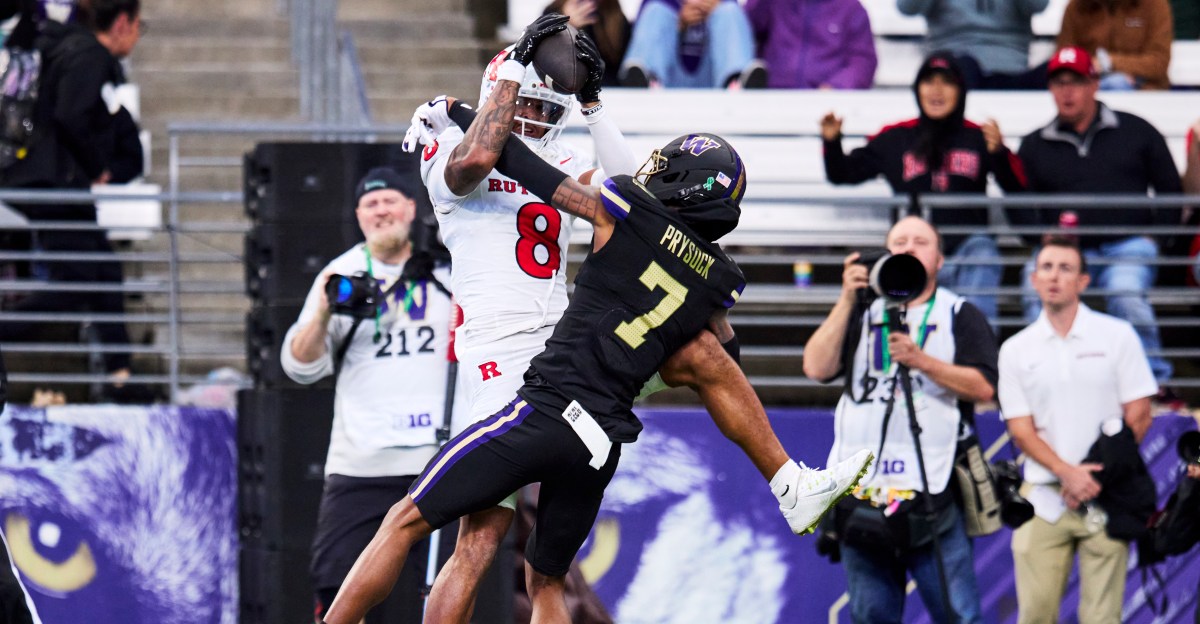



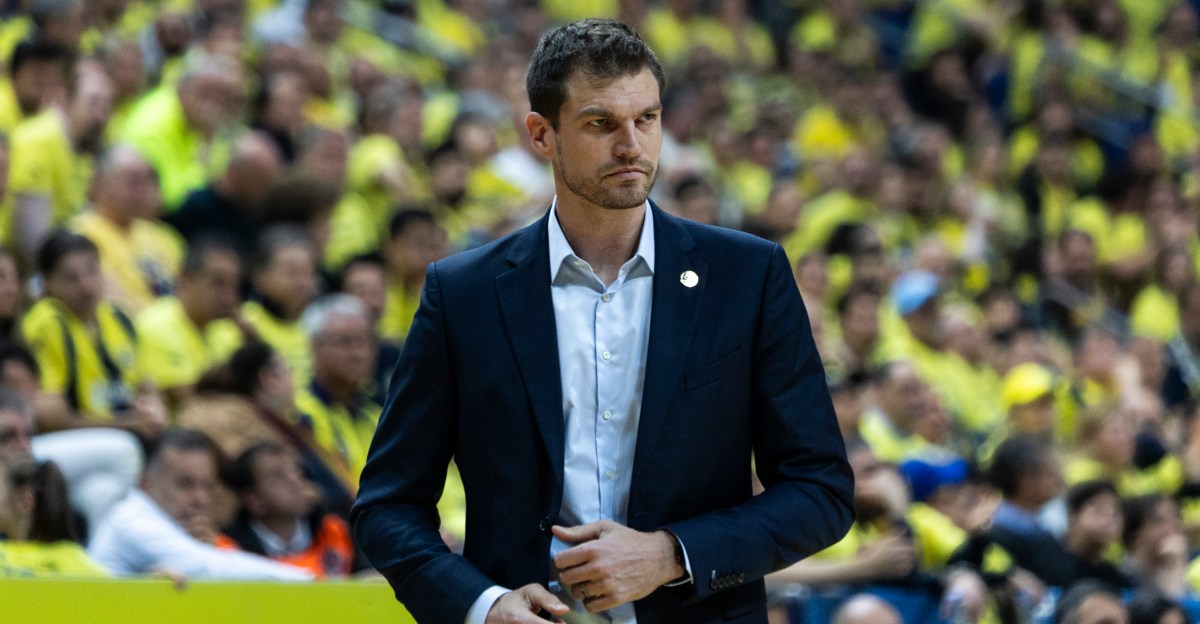
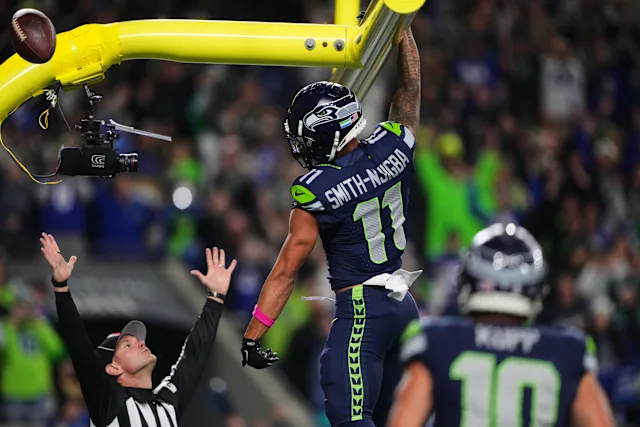
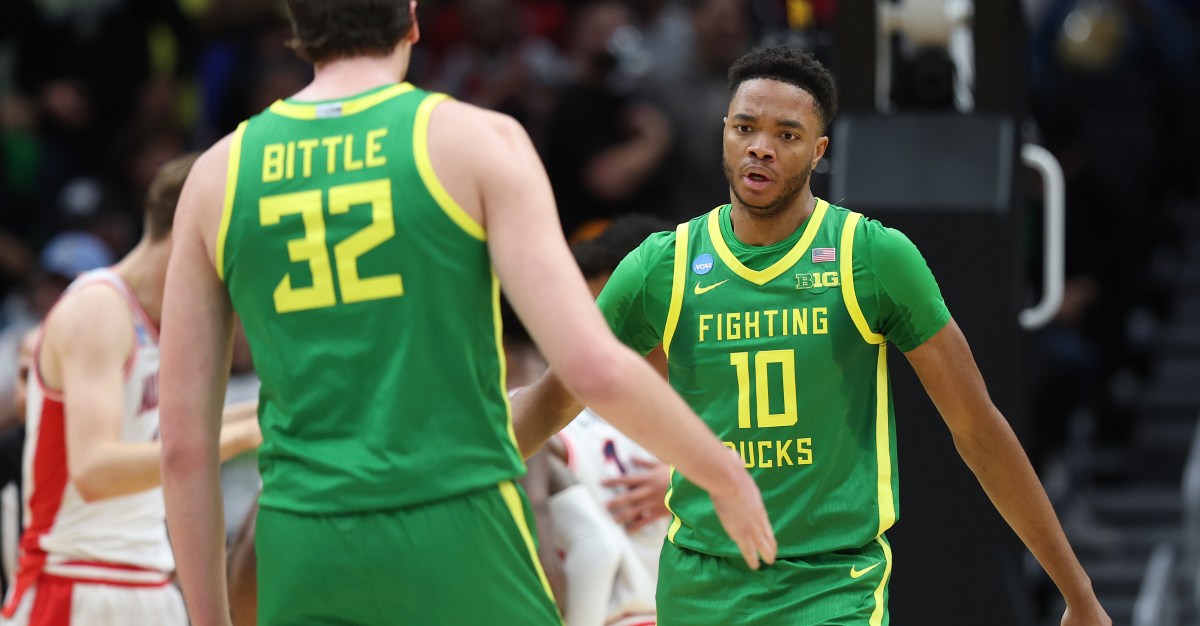






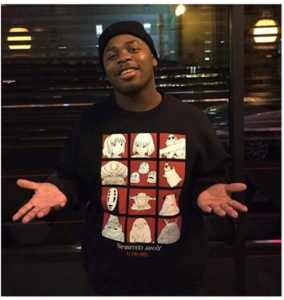



Post Comment